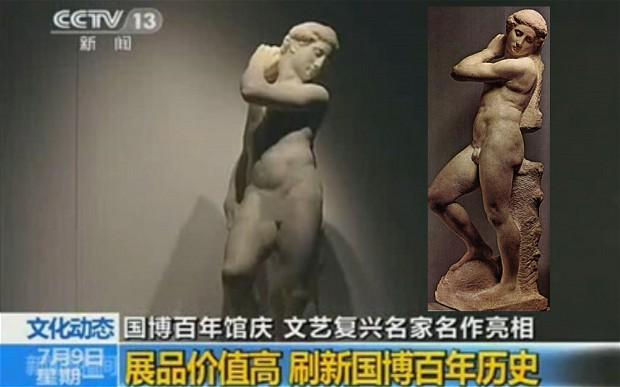When China's National Museum opened their year-long "Renaissance in Florence: Masterpieces and the Protagonists" exhibit, China Central Television's (CCTV) censorship of Michelangelo's nude "David-Apollo" received harsh criticism from the Chinese public.
During the news story covering the opening, CCTV blurred out part of the statue's anatomy. Across chat rooms and social media networks, hundreds of thousands of commenters complained that the statue was not erotic, but the digital mosaic made it look like porn. Others joked that the statue was a fake, spawning the social media movement "the real David has a penis".
In the rebroadcast of the news segment later the same afternoon, the digital mosaic was removed without explanation. The statue remained uncensored on all future broadcasts.
"Renaissance in Florence: Masterpieces and the Protagonists" is the largest-ever exhibit of Italian art from the 15th and 16th centuries and the most expensive ever put on by the National Museum of China, with 67 pieces curated by Head of Florentine Museums Cristina Acidini from nearly 30 public and private museums, galleries, and collections in Florence.
The "Masterpieces" section, where "David-Apollo" is on display, will feature the most famous works of the Florentine Renaissance on three-month rotations. Raphael's self-portrait and Botticelli's "Adoration of the Magi" are also currently part of the exhibit.
A new exhibit of Italian art will appear in the Italian Space in the National Museum of China every year for the next five years as part of the Memorandum of Understanding on Promoting Co-operation on Cultural Heritage Protection signed by Italy and China in October 2010.









